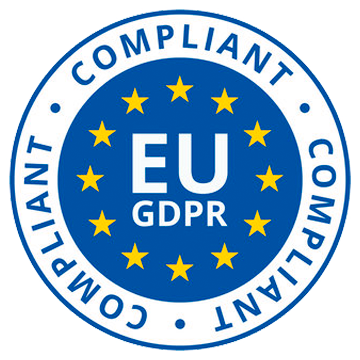59% of prospects report being irritated by ‘generic sales pitches’. So it makes perfect sense for businesses to invest in developing smarter strategies and more compelling proposal documents. In a remote world where virtual meetings are the lifeblood of business, your digital sales collateral needs to be on point!
But if you Google ‘How to improve your sales deck’, you’ll find a ton of articles offering ‘top tips’, ‘best practises’ and ‘complete guides’ – and nothing to do with using real user data to fine tune your collateral based on real data.
In this article, we’re going to introduce the concept Sales Deck Optimisation (SDO) – a data-driven approach to sales collateral which makes use of modern document sharing features.
Before we jump into it though, let’s start with a quick overview of the standard sales deck best practises:
Five best practises for building a sales deck
1. Tailor your collateral to the prospect
The quickest way to turn off a prospect is making your pitch feel impersonal. So your sales collateral should always be tailored to the prospect’s specific business.
This could simply mean changing a few words to be more relevant, or it could adding extra content to directly address pain points and demonstrate an understanding of the business’s needs.
Bonus fact: 86% of people said they would be more likely to make a purchase from a salesperson who tools the time to research their company before interacting.
2. Tell an engaging story
Your proposals should not simply overload prospects with information; they should help the prospect imagine how your solution is going to improve their business.
The best way to do this is through storytelling. A clear, honest narrative helps prospects digest and contextualise your claims, as well as making it more engaging and memorable.
Bonus fact: After a presentation, 63% of people remember stories. Only 5% remember a statistic.
3. Include relevant data
While statistics shouldn’t overwhelm your collateral, they do have an important role to play. The right data can help substantiate your claims and demonstrate your experience and knowledge.
The key is to pick only the most essential – and compelling – pieces of data, and present them in an aesthetically pleasing way. Most people don’t remember statistics, but they will be impressed with the right data visualisation.
Bonus fact: Most people only read 20-28% of the text on a page.
4. Cut the fat
Too often, businesses stuff their sales collateral full with every piece of information they can find. And that makes sense: until prospects have responded, you just don’t know what’s going to work.
But the reality is, effective documents should be lean and to the point. Which means you should be in a constant process of refining the information in your collateral to ensure they create an optimal Document Experience (DX).
Bonus fact: 95% of B2B buyers say they want shorter, more visual content from prospective partners.
5. Invest in aesthetics
When prospects interact with your collateral, they’re not just reading the text – they’re taking in the entire experience of the document. And that means design has a huge impact on their overall impression.
While most businesses will spend some time ensuring their documents reflect their brand, you should also consider how information is laid out, the readability to the text, and how the design augments the points being raised on each slide.
Bonus fact: The human brand processes visual information 60,000x faster than it processes writing.
How sales deck optimisation works
Sales Deck Optimisation is the development of sales collateral which makes use of document sharing platforms.
Think about it like this: good salespeople don’t simply write their pitch and go around mindlessly repeating it. They adapt to the responses they get, slowly finding ways to better tailor it to their audience and make their performance more engaging
Well, the same is true of your collateral: online file sharing has unlocked a whole new world of user engagement analytics, allowing you to track how prospects, co-workers and partners interact with your documents on an extremely granular level. This data helps you to understand what is and is not effective about your content. And by using that insight to tweak your documents, they will slowly improve – to the point of being irresistible to prospects.
Why is sales deck optimisation important?
Put simply, Sales Deck Optimisation is important because good sales decks score deals. But there are also several good reasons to think this process of data-driven refinement is more valuable than ever.
Proposals have to stand out
For one thing, competition is increasing in most industries, as the internet lowers barriers to entry. That means that your proposals have to be truly exceptional to stand out. And while that can be achieved purely internally, real user data is a far greater indicator of whether your documents are succeeding.
B2B buying has changed
Buyer teams are getting bigger – they now average up to 10 people, and the buying cycling is becoming less linear and more difficult to navigate, with 77% of B2B buyers stating that their last purchase was highly complex or difficult.
This creates even more pressure for your documents to stand out. But it also means your documents need to be carefully refined, so that they are as clear as possible and making buying easy for your prospects.
Buyers need confidence
With increased competition and more content to consume, buyer confidence is likely to be lower. And that means your documents need to be so air tight that they show prospects you are trustworthy. Gartner has found that customers who perceived the information they received to be particularly helpful were 2.8 times more likely to experience a high degree of purchase ease, and three times more likely to buy a bigger deal with less regret. Using reliable and trustworthy electronic signature tools and document workflows will greatly help improve customer confidence.
Intuition alone won’t cut it
Data has become a standard part of most business areas, and sales needs to step up. But not just because it’s trendy: data really does help produce better results. And Sales Deck Optimisation allows ambitious businesses to extend their use of data into their document sharing practises.
A recent Salesforce report found that high-performing sales teams (the top 24% of more than 2,900 sales professionals surveyed) are 1.5 times more likely to base forecasts on data-driven insights – and underperforming sales teams are 1.7 times more likely to forecast on intuition.
Three vital sales deck optimisation tools
Sales Deck Optimisation is still an evolving discipline, and as new technical features are developed its possibilities will surely expand. But below, we’ve provided a breakdown of a few of the most powerful existing Sales Deck Optimisation tools:
1. Slide performance
When prospects read your documents, they rarely spend the same amount of time on two pages. Tracking how long they interact with each slide – and how often – can provide a number of super helpful insights.
The kind of insights you’ll get
If prospects are viewing specific slides for longer, it could mean one of two things: they could either be more highly engaged, or they could be struggling to understand the information. Fortunately though, it’s almost always easy to tell which of these it is, meaning you can quickly get a sense of what parts of your document are and aren’t working.
What slides are your prospects skipping? Which parts of our sales message resonate most? How often do your prospects review your collateral? These are all questions slide performance metrics from the right document sharing platform can provide.
TL;DR, Analysing how long prospects spend looking at individual slides will help you find ways to make your documents more engaging.
2. Document user analytics
The better you understand a prospect, the better you can tailor your proposals to them. And with the right Sale Deck Optimisation platform, you can generate detailed analytics of every prospect you share a link with.
The kind of insights you’ll get
While document sharing platforms can’t provide psychographic or demographic analytics, they can provide really powerful insights into how different members of a buying team interact with documents.
That information will enable your salespeople to tailor their interactions more carefully, as well as helping you develop a genuinely personalised approach to sales collateral if the deal size justifies that level of effort.
TL;DR, Analysing how individual users interact with a document can provide great insight into their approach to buying.
3. Email interactions
When you share a document with prospects via email, they not only interact with the document – they also interact with the email itself. Tracking how a prospect interacts with your email – especially relative to the linked document – can be highly telling.
The kind of insights you’ll get
The main insight you’re likely to gain from this data is about how your prospects are responding to your sales efforts.
You can, for example, project with a reasonable degree of confidence how widely they might be sharing the link. If the document has been open more times than the email – that’s a fairly safe sign that they’re link sharing with their colleagues. Another great example is the time it takes a prospect to open your email and look at the links you’ve shared: if the lag is long, it indicates a relatively low level of engagement. And that means you might be better focusing your efforts elsewhere.
TL;DR, Sales teams can gain insight into how their sales are progressing by carefully monitoring how the links they share are being interacted with.
Once you’re ready to share a deck with a client or customer, use Sizle to see how your document is engaged with.
Turn docs into deal intelligence
Sizle shows what really happens after you hit send.
Free 7-day trial
Unlock insights instantly
Join 30,000+ professionals



